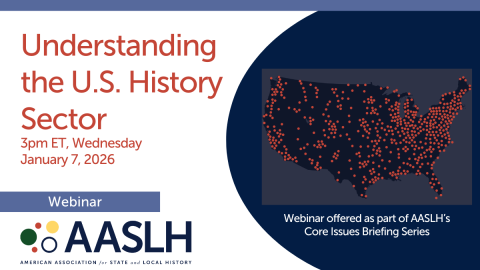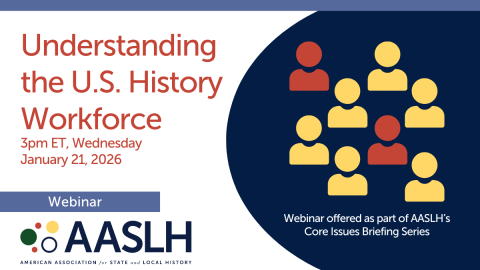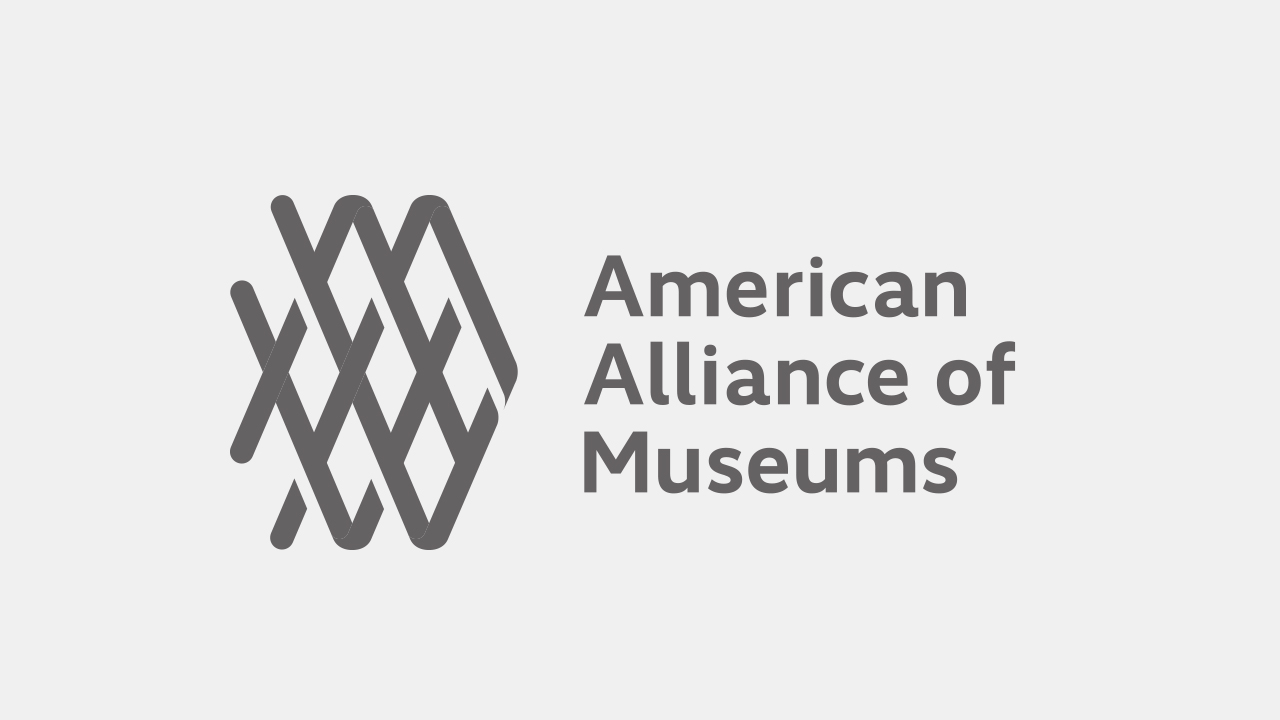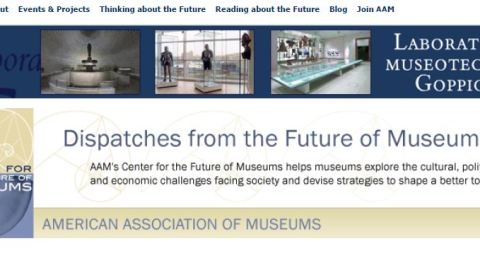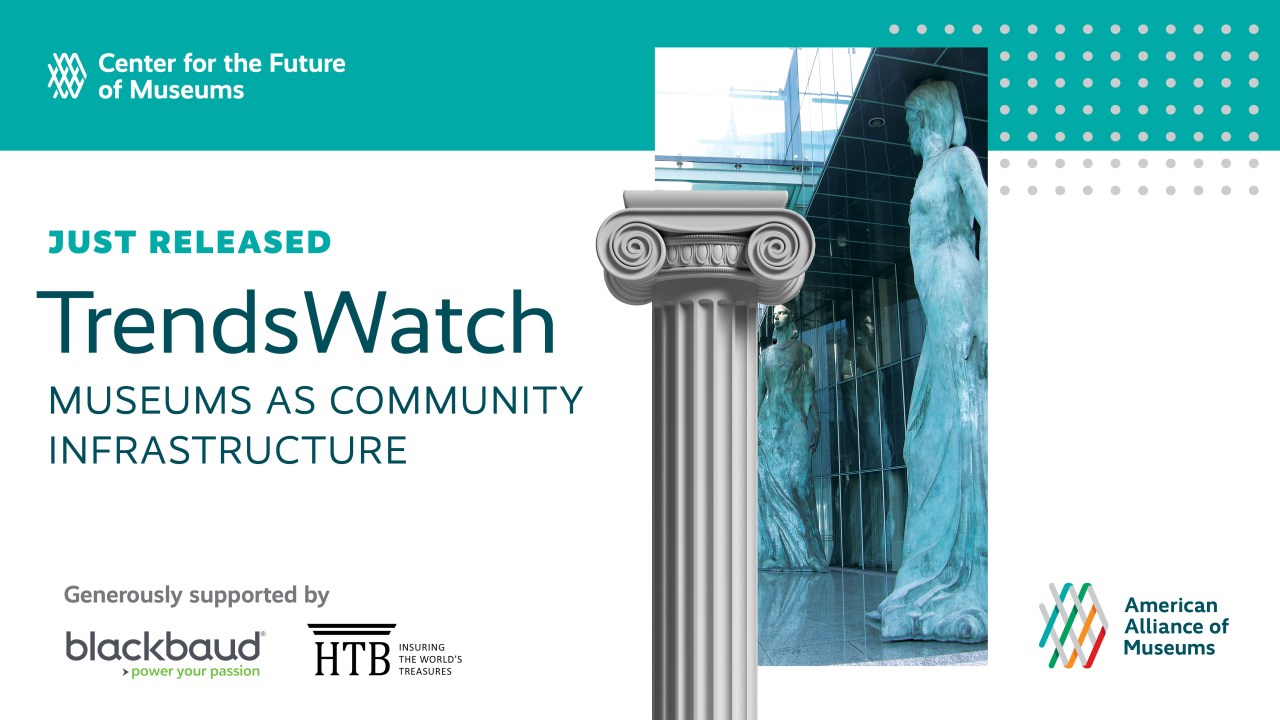
As a child, I fell in love with museums for the good they did for me: providing a place of wonder, exploration, refuge, and, as I aged into teen-dom, an opportunity for meaningful work as a volunteer. As an adult, I fell in love with museums all over again because of the good they do for the world. Some of that good is integrally tied to museums’ missions, but much of it transcends museum-ness, arising from the passion of museum people, and from their love and concern for their communities.
I’ve examined some of these transcendent goods in past editions of CFM’s annual forecasting report—documenting how museums tackle huge societal issues like criminal justice reform, homelessness, forced displacement and refugees, and the struggle over representation and identity. This year the report is an unashamed, full-on love letter for the myriad ways museums help the world. TrendsWatch: Museums as Community Infrastructure documents the value of museums not as museums per se, but as big bundles of assets that make their communities better, stronger, and more resilient through how they choose to operate.
To make this case, I look at how museums contribute to five pillars of community strength and resilience:
- Education for our children
- Livable communities for our elders
- Mental health
- Emergency response in the face of disasters
- A human-centered culture of sustainability
The report is chock full of examples of museums serving as “community caryatids”: the Fort Worth Museum of Science and History providing space and staff support for students displaced into virtual learning; The Musical Instrument Museum in Phoenix creating virtual programming for senior communities; the Tampa Museum of Art offering free mental healthcare arts engagement programs; The Yale Peabody Museum in New Haven raising endowment to fund free admission in perpetuity.
When it comes the fourth topic in the report, emergency response in the face of disasters, current events have outpaced my writing. Since we went to press, museums find themselves on the front line of emergency response to the Russian invasion of Ukraine. The Lviv Municipal Art Center has opened its doors to people fleeing the assault, offering coffee, tea, cookies, and cats, and is working with the district council to find temporary lodging for displaced persons. The Lviv National Art Gallery has turned its bottom floor into a volunteer sorting and shipping center for medical supplies. In the US, the Cultural Heritage Monitoring Lab, a partnership between the Smithsonian Institution and the Virginia Museum of Natural History, is using geospatial data to document the impact of war on Ukrainian culture and heritage, and alert Ukrainian officials when action might be taken to ameliorate the damage. I doubt any of these museums foresaw they would play these roles, but through brave and creative deployment of their talents, people, equipment, and space, they are making a meaningful difference in the lives of the Ukrainian people.
The case I make in this year’s report is not only aspirational, but pragmatic as well. As I point out in the introduction, there are many people who don’t appreciate museums as museums. (Data on the general public from Wilkening Consulting’s Annual Survey of Museum-Goers consistently shows that 70 – 75 percent of US adults don’t visit even one museum in any given year.) Even people who do appreciate and use museums on a regular basis may not understand why they should go beyond paying admission or becoming members to support museums through government funding and their own philanthropy. As we emerge from the COVID-19 pandemic, there is growing awareness of the need to improve the systems that failed so many in past two years. By documenting the good museums do for people and communities, our sector can make an effective case that, as essential infrastructure, museums are deserving of public and private support.
Quantifying the benefits museums provide to their communities may influence museum practice as well. I believe this is a good thing, because as much good as museums do now, they could do even more. As I discuss in chapter five, “Right-Sizing the World,” the way we choose to define success shapes the systems we create. A narrow focus on traditional metrics such as attendance, collections size, and square footage inevitably constrains the potential of what museums can achieve. It is my hope that this report will inspire you to reexamine how your organization defines success and create metrics that challenge you to expand your thinking about what a museum can achieve.
In 1910, Daniel Burnham exhorted city planners to “make big plans; aim high in hope and work.” Museum planners should have equally lofty goals: to become vital players in the complex systems that help their communities thrive in the face of crises yet to come.
Download your free copy of the report—please read, share, critique, and add your voice to this exploration of the future.
Yours from the future,
Elizabeth
The Alliance wishes to thank these corporate partners that have generously supported this year’s TrendsWatch:



